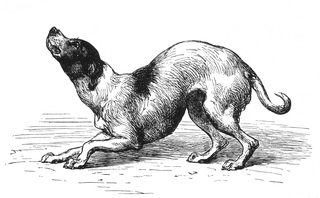The Death of Dominance Based Training
Dog Training has evolved in the past two decades
Find out why leadership is better than domination
Language such as "showing your dog who is boss" and you have to "dominate" your dog in order to maintain control has long since been used in dog training. It has only been in the past two decades, that the dog training community has renovated its training platforms. Emergent research in forensic archaeology, behavioral science, and evolutionary anthropology have blasted the field of dog training, finally, into the realm of academically feasible. Parker and Gilbert (2015) note the various archaeological digs that place the domestication of dog between 14,000 and 30,000 years ago, depending on the interpretation of the genomes found and the researcher presenting. While the first years of dog-human symbiotic relationships may not have shown evidence of breeding the canines for specific traits (Larson & Fuller, 2014), modern dog has definitely been molded by humans in this manner, as evidenced by the variety in dog breeds we have today. From the Dachshund to the New Foundland, domestic dog shows an incredible array of physical variance within a single species. In fact, it is posited that dog is a separate species from wolves based off of their interaction with humans, which is evidenced in different genetic expressions in the brain (Saetre et al, 2004). Experiments in the domestication of foxes have revealed that after 20 generations of domestication, some of the same characteristics in domestication that dogs display start to appear in the foxes as well. (Statham et al., 2011).
Even 14,000 years is a long time to spend in the company of humans and outside the confines of a traditional wolf pack. Previously much of dog training had been based on studies conducted on wolf pack behavior. It was found that in dog packs, hierarchies are much more solid than wolf packs (Range, Ritter, & Virányi, 2015). From this we learned that dogs do not need constantly be made to submit in order to maintain dominance. They enjoy the status quo and major life events usually major life events are the only upsets to the stable order. This is one of the reasons why flipping your dog on its back and physically holding them down to show dominance rarely works. The other reason is that placating behaviors are presented to the dominant dog by the submissive dog. The dominant dog does not physically force the submissive dog into these positions. The licking of the face, the showing of the belly, the ears back, headed bowed, body crouched and crawling- these are all behaviors submissive dogs present to dominant dogs in a near ritualistic fashion. They can be used in dog training as indicators of a climate, but not as tools to demand submission. Although at times a more dominant dog will mouth on the muzzle or throat of a more submissive dog while lowly growling to show their position in the pack.
Source: wikiwand
(photo by Marco de Kloet)
That being said the terms "dominant," "alpha," and "submissive" are not altogether obsolete. Dogs definitely do have more dominant or less dominant personalities and roles within their dog packs. Humans must take the alpha role in their pack in order to maintain harmony. These ideas, while put into a different paradigm, are still very much alive and are useful terms for teaching dog handling and behavior to students. There is not a specific settled term yet for the new order of dog training. There are many out there that are trying to lay claim to the new and improved training theory. I tend to refer to it as Canine Leadership Theory, and will do so until the battles among behaviorists and trainer for theory ownership subside. I call it that because that is what the essence of it is: leadership. We teach our dogs, communicate with them in ways they understand, and display leadership in order to achieve pack harmony. Perhaps it is my military officer background or my doctoral studies in leadership, but more and more I am seeing the connections between the leadership theories as applied to man and how they translate to canine-human interaction. But that is a blog for another day!
Cheers,
Sammy the Dog Trainer
References
Larson G, Fuller DQ (2014) The evolution of animal domestication Annu Rev Ecol Syst 45: 115-136. doi: 10.1146/annurev-ecolsys-110512-135813
- Parker, H.G., & Gilbert, S. (2015). From caveman companion to medical innovator: Genomic insights into the origin and evolution of domestic dogs. Advances in Genomics and Genetics, 2015, 239-255. doi:10.2147/AGG.S57678
Range, F., Ritter, C., & Virányi, Z. (2015). Testing the myth: Tolerant dogs and aggressive wolves. Proceedings. Biological Sciences / the Royal Society, 282(1807), 20150220.
Saetre P, Lindberg J, Leonard JA, Olsson K, Pettersson U, et al. (2004) From wild wolf to domestic dog: gene expression changes in the brain. Mol Brain Res 126: 198-206. pmid:15249144 doi: 10.1016/j.molbrainres.2004.05.003
- Statham, M. J., Trut, L. N., Sacks, B. N., Kharlamova, A. V., Oskina, I. N., Gulevich, R. G., . . . Kukekova, A. V. (2011). On the origin of a domesticated species: Identifying the parent population of russian silver foxes (vulpes vulpes). Biological Journal of the Linnean Society, 103(1), 168-175. doi:10.1111/j.1095-8312.2011.01629.x










Comments
Post a Comment